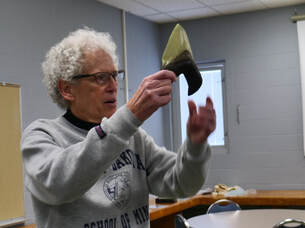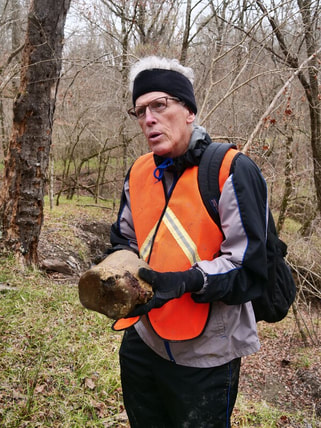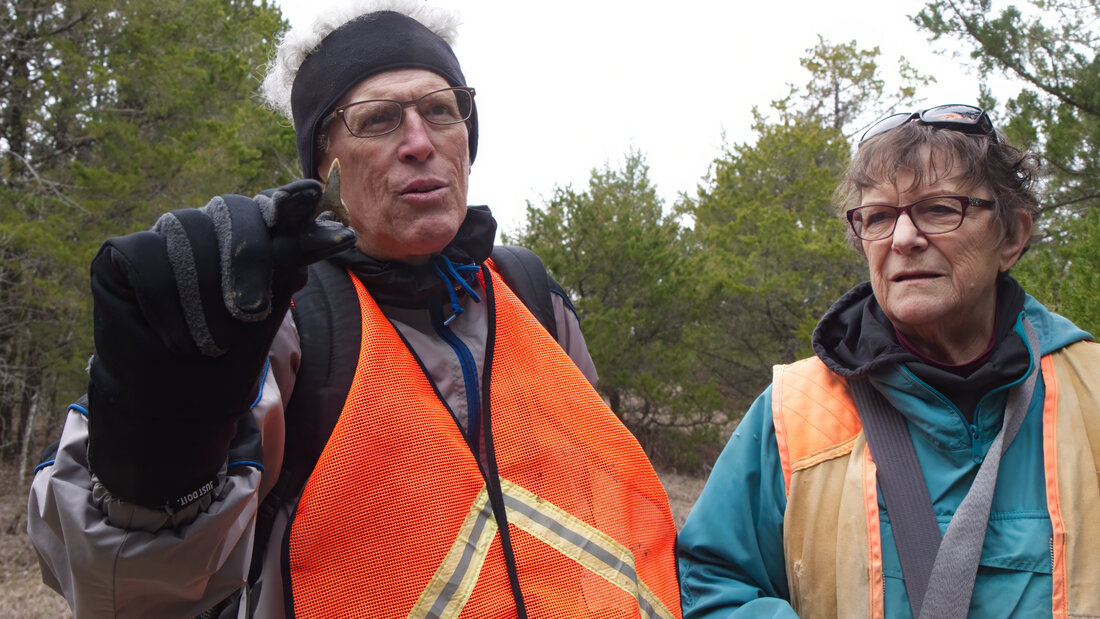|
By C.Paxton Apologies in advance for any errata written here are my own.  Louisiana Master Naturalists Northeast enjoyed an excellent Geology Workshop February 17th, 2024, given by Dr. Gary Stringer, ULM Professor Emeritus of Geology. The subject was "The Prehistoric Megatoothed Sharks of Louisiana" and his illustrated talk was informative and highly stimulating! Dr. Stringer has discovered a great many marine fossils in the course of his research including great sharks' teeth, the spines and crushing teeth of rays, the ear-stones (Otoliths) of fish and the bones of huge prehistoric whales! His publications have firmly established that the Yazoo Clay deposits in the Copenhagen Hills near Columbia are one of the Southeast's richest repositories of Late Eocene fossils including the remains of great sharks and whales, the apex predators of the age! Our lecture conveyed a great introduction to the taxonomy, range and ecological interactions of the giant prehistoric sharks that inhabited the area that we know as Louisiana in the late Eocene. It was fascinating to focus on the physiological characteristics of the teeth.  Dr. Gary Stringer holding the caudal vertebra of an extinct Basilosaurid Whale, Basilosaurus cetoides that he had just found! Dr. Gary Stringer holding the caudal vertebra of an extinct Basilosaurid Whale, Basilosaurus cetoides that he had just found! The classroom portion was conducted at ULM's Hanna Hall, and the field trip was held with special permission at Nature Conservancy Louisiana's Copenhagen tract, Caldwell Parish, not far from the Ouachita River. Despite low temperatures and high winds, it was a great success! Our group leaders wore Orange vests and the fossils were found on the surface without disturbance of the soil or vegetation. Dr. Stringer was kind and thorough in his examination and identification of the specimens that we found, he also kindly presented LMN-NE with some of his finds for the display that will enrich the group's outreach events! Overview: The invertebrate and vertebrate fossils were collected on the surface with no disturbance of plants or soil. The invertebrate fossils were more numerous, which is typical. All invertebrate and vertebrate specimens recovered have been previously described from the site by various researchers and studies, i.e., no new species were found. Furthermore, no unique or rare specimens were recovered on the field trip. The fossils were common and abundant. At the conclusion of the field trip, Dr. Stringer identified the findings of each participant. Results are given below for the entire group including Dr. Stringer. Taxa and number found: Invertebrates Coelenterates (corals) Balanophyllia irrorata (39 specimens, the most abundant coral at the site) Flabellum cuneiforme (27 specimens) Endopachys maclurii (2 specimens) Archohelia sp. (3 specimens) Bivalves (shells): Venericardia planicosta (24 specimens) Cubitostrea trigonalis (46 specimens, primarily broken; oyster shells) Glycymeris sp. (1 specimen) Chlamys nupera (2 specimens, broken) Thaumastoplax sp. (2 specimens) Atrina jacksoniana (3 specimens; internal casts) Teredo sp. (10 specimens) Gastropods (shells) Calyptraphorus relatus (2 specimens) Clavilithes humerosus (4 specimens) Architectonica alveata (1 specimen) Athleta petrosa (1 specimen) Pseudoliva vetusa (1 specimen, broken) Turritella sp. (14 very small specimens) Scaphopods (tusk shells) Dentalium mississippiense (1 specimen) Trace fossil Burrow (unknown origin) (2 specimens) Vertebrate remains Myliobatis (1 small specimen of crusher tooth of eagle ray) Shark coprolites (10 specimens; fossilized fecal material) Shark teeth (4 specimens; 3 of Isurus and 1 of Carcharhinus) Basilosaurus cetoides (whale remains; several small pieces of non-identifiable bone; 2 small pieces of ribs; one partially complete vertebra) Zygorhiza kochii (small whale at Copenhagen; possible part of centrum of a small vertebra) Some of the particles that washed off our specimens included the following microfossils that Dr. Stringer kindly identified as Foraminifera, commonly called 'Forams'; he explained these were amoebae that could secrete calcium carbonate.
0 Comments
Leave a Reply. |
LMNA News BlogWelcome to the Louisiana Master Naturalist Association News Blog. Archives
April 2024
Categories |
Search by typing & pressing enter

 RSS Feed
RSS Feed
